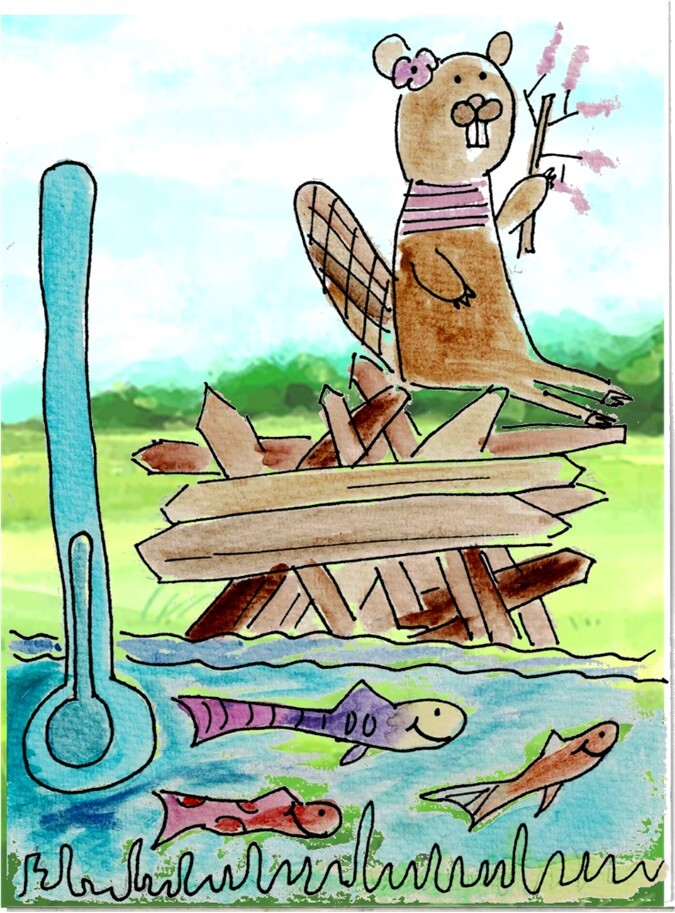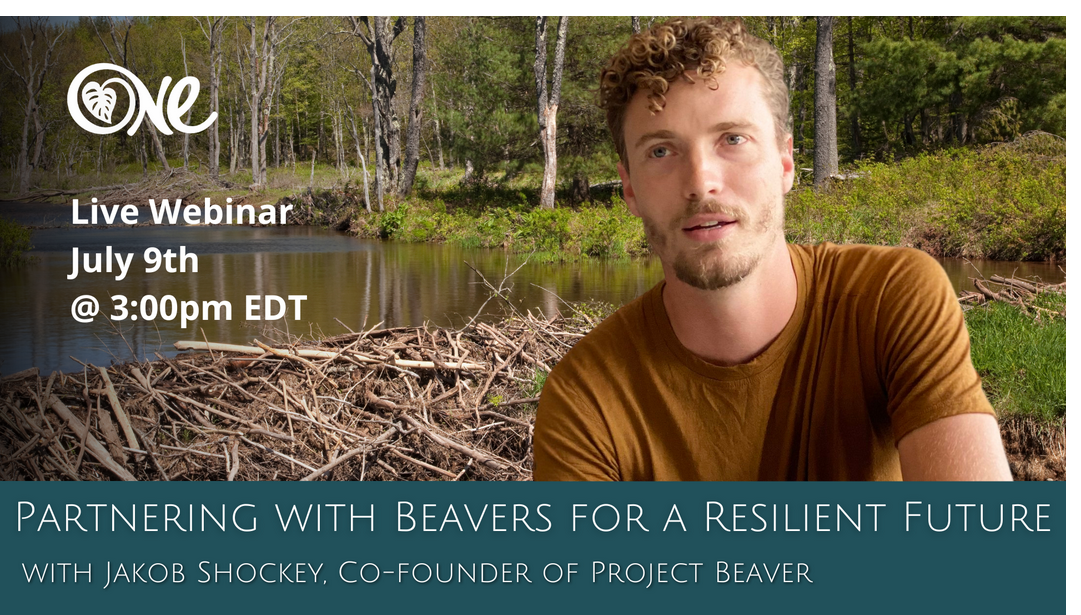All of these animals are using the pond, but only one of them is making it.
Gosh that’s rotten. Scientist predict that climate change will alter our wetlands. You know, the things we will need most to absorb all the storms and flooding caused by Climate Change.
Too bad there isn’t some kind of natural solution that can create wetlands where ever it goes for free. But I’m sure if that were possible the scientists would have mentioned it, right?
Climate change will disrupt inland wetlands in North America, study finds
In a new study published in Nature Communications, researchers from Pacific Northwest National Laboratory (PNNL), Lawrence Berkeley National Laboratory, and the University of Michigan focused on improving the simulation of inundated wetlands using a state-of-the-science ESM that includes physical mechanisms of inundation and a range of climate scenarios to project changes and predict factors that can control wetland dynamics.
With the refined model, researchers further found the wetlands over North America will be significantly affected by climate change under future scenarios.
The results reveal projected changes in wetland characteristics over North America from 25° to 53° North under two climate scenarios using a state-of-the-science ESM. At the continental scale, annual wetland area decreases by ~10% (6%–14%) under the high emission scenario, but tiotemporal changes vary, reaching up to ±50%.
Gosh that’s rotten news. So many living things depend on those wetlands. And they are going to be in even worse shape with Climate Change.
As the dominant driver of these changes shifts from precipitation to temperature in the higher emission scenario, wetlands undergo substantial drying during the summer season when biotic processes peak. The projected disruptions to wetland seasonality cycles imply further impacts on biodiversity in major wetland habitats of the upper Mississippi, Southeast Canada, and the Everglades.
Furthermore, wetlands are projected to significantly shrink in cold regions due to increased infiltration as warmer temperatures reduce soil ice. The large dependence of the projections on climate change scenarios underscores the importance of emission mitigation to sustaining wetland ecosystems in the future.
Wow. Bad news for hot AND cold regions. If there were only some kind of helper that could create cooler pond temperatures and microclimates.
The comedian Paula Poundstone used to have an old bit where she talked about an elementary teacher explaining to her about Christopher Columbus discovering America and her asking, “but wait, weren’;t there a lot of people already living there when he ‘discovered’ it?”
And the teaching signing and explaining with impatience. “He discovered it for SPAIN”.
Wherein she would riff about how annoying it would be if bandits suddenly ran across our living room with little flags saying they had “Discovered your apartment FOR SPAIN!!!
Which is what I thought of when I read this article from the EPA.
How Do Beaver Dams Affect Water Quality?
Considered nature’s engineers, beavers build dams across streams to create ponds. The lodges within these dams can only be accessed through underwater entrances, keeping beavers safe from predators like bears and wolves. After historical overhunting, beaver populations are growing—in part because of recent reintroduction programs—and are settling down in places they’ve never been found before, including Tierra del Fuego and the Arctic. Beavers are a keystone species because of their significant impact on streams, the movement of water, water quality, and the other animals that live there. Beavers can alter their environments in many ways, especially through dam construction. The effects of these dams can be different in geographical regions (also known as biomes), but scientists do not have a clear understanding of how they impact water quality, habitat, and sedimentation in floodplains.
“Due to limited study in many biomes, some research scientists and land use managers must make decisions on how the conservation, expansion, and reintroduction of beavers can alter their local streams based on findings from ecosystems that are more frequently studied and better understood,” said EPA researcher Ken Fritz.
Gee I’m all a flutter. What do you think they found?
Because stream ecosystems are complex, it can be difficult to understand how disturbances and changing environmental conditions will impact the ecosystem. Additionally, the impacts of beaver dams may vary widely across biomes because the underlying watershed characteristics are different.
EPA scientists Ken Fritz, Tammy Newcomer-Johnson, Heather Golden, and Brent Johnson, in collaboration with researchers from Miami University, Ohio, conducted a scientific literature review to better understand how beaver dams impact stream systems across different biogeographical regions. Their paper, “A global review of beaver dam impacts: Stream conservation implications across biomes,” used 267 peer-reviewed studies to quantify the effects of beaver dams. Literature reviews summarize the main points of scientific research already published on a specific topic, which helps determine future efforts. The paper provides a current understanding for environmental managers on how the conservation, expansion, and reintroduction of beavers can alter streams in different geographical locations.
I mean considering how MANY beavers there used to be before the fur trade I sure hope they weren’t ruining streams.
The literature review found that beaver dams had significant environmental effects across all studied biomes. The impacts on stream morphology (the shape of river channels and how they change in shape and direction over time) and stream hydrology (water movement) were similar across geographical regions. Stream integrity, or health, also appeared to improve with beaver conservation in all biomes. The geographical region influenced how water quality and plant and animal life changed in response to beaver dams.
Specifically, results show that while nitrate and suspended sediments (which block the sunlight that bottom-dwelling plants need to survive) decreased downstream from beaver dams, pollutants like methyl mercury, dissolved organic carbon, and ammonium concentrations increased. Total nitrogen and phosphorus concentrations tended to not be affected by beaver dams. The effects beaver dams have on pollutants vary depending on environmental conditions —like temperature, sunlight, water velocity and depth – that aid in changing and transporting certain pollutants. EPA scientist Heather Golden noted that “the effects of beaver dams on water quality can often vary with time of year, or season.”
Seriously? Scientists from the federal government turned in this book report and said that beavers can cause different effects depending upon the season?
The paper found that beaver dams can significantly influence the areas around them. These findings can be useful for stream conservation and restoration efforts that introduce or protect beavers. The review also found that the impacts of beaver dams were most often studied in temperate forests. Additional studies are needed in dry or cold biomes historically occupied by beavers and in new environments where beaver populations are currently expanding.
OH MY GOODNESS.
Beavers had a nice visit with Native Plant people in Marin last night. They were surprised to learn about varietal feeding and that beavers ate tules and grasses and mosquito fern at various times of year. About the same time I was getting ready to present this timely video dropped from Jen Vanderhoof in Washington and fit right into the discussion.
Fantastic look at beavers on Farmland.
To learn more join the webinar tomorrow.
The Live webinar s at 12:00 pm PDT/3:00 pm EDT on Tuesday, July 9th
Join us in discussion with Jakob Shockey, co-founder of Project Beaver, for an insightful webinar that explores a pivotal question, “How can we move towards coexistence and partnership with Nature even in places where we as humans have dramatically altered the landscapes?” Looking to Nature and co-creative partnership, we will delve into the role of beavers as natural engineers and their crucial contributions to environmental health and sustainability.
During the webinar, you’ll learn about the critical ecological benefits that beavers provide. They create and maintain wetlands, essential for a diverse range of flora and fauna, which serve as natural water filters, reduce flooding risks, and help in carbon sequestration efforts. Jakob will discuss how the structures built by beavers, such as dams, can prevent flash flooding and reduce soil erosion, essential for restoring degraded landscapes and repairing damaged watersheds.
Despite their importance, beavers are often seen as nuisances. This session will challenge such views and highlight the need for a shift towards coexistence and appreciation of beavers as valuable partners in our environmental efforts.










































